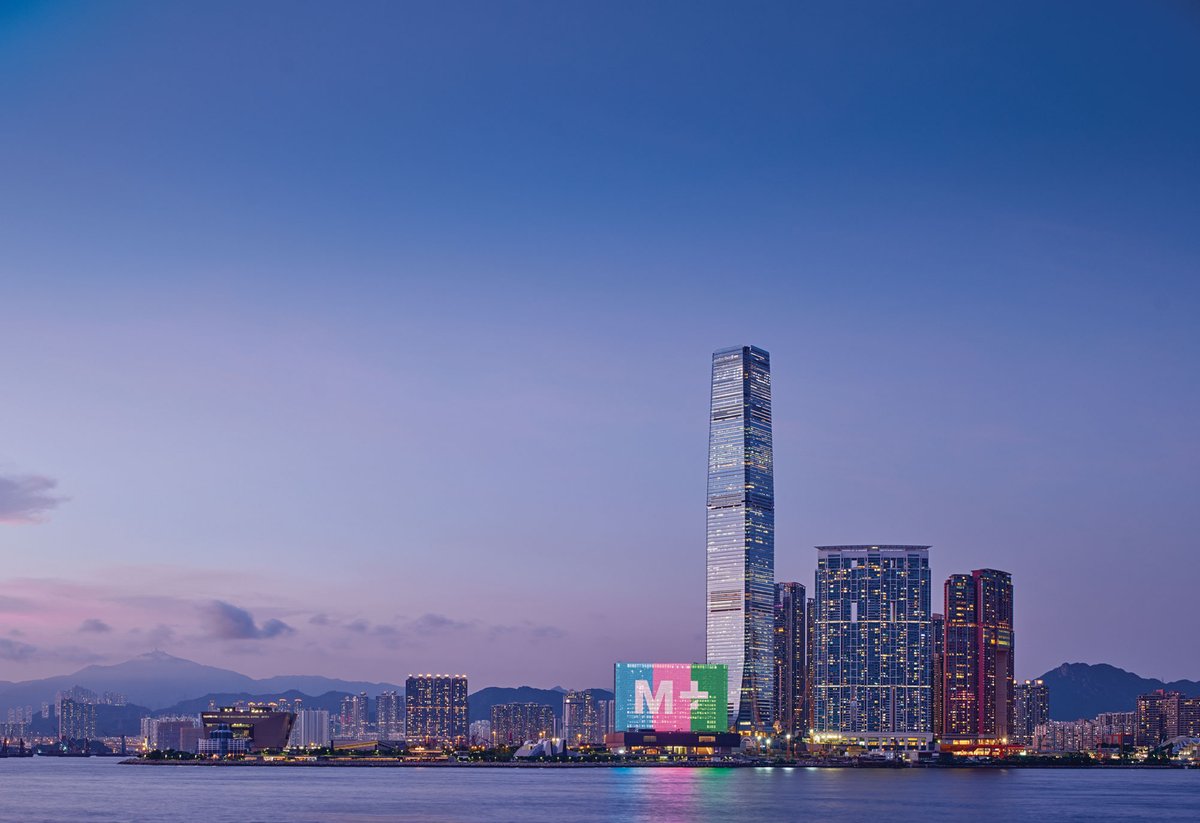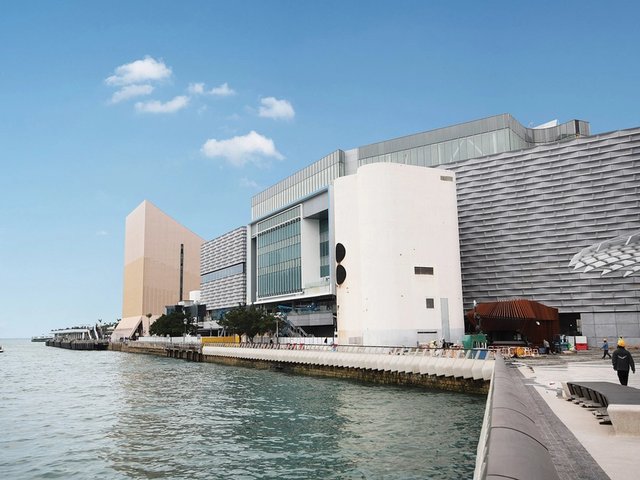When the idea was first floated for a major arts district on the southern tip of Hong Kong’s Kowloon peninsula on the Victoria Harbour waterfront, it was 1996. Hong Kong was under British sovereignty and the local art scene was just aspiring to greater international relevance. Now that the West Kowloon Cultural District is finally a reality, crowned by the opening today, 12 November, of the M+ museum of 20th- and 21st-century visual culture, the territory finds itself under very changed circumstances. Its importance as an international arts centre is beyond dispute, but the political environment is profoundly different, adding more than a tinge of worry to the festivities for M+.
The introduction in mid-2020 of a new national security law, imposed by China, applies to Hong Kong a rather broad definition of the crimes of secession, subversion, terrorism and collusion with foreign or external forces, leading to people being jailed for using slogans that have now been deemed illegal. On 11 November, the same day as the museum opened its doors to press, a Hong Kong court sentenced Ma Chun-Man to five years and nine months in prison for inciting secession by making pro-independence speeches in public and online. He is the second person to be imprisoned under the National Security Law, and the first to be convicted for speech crimes. Meanwhile, in Beijing, the sixth plenary session of the Communist Party concluded with a communiqué enshrining President Xi Jinping’s place at the core of the Party—ranking him alongside the most important Communist leaders of the past, Mao Zedong and Deng Xiaoping.
Since Hong Kong’s handover to China in 1997, the slow gestation of M+—a name indicating its aspiration to be more than a museum—has unfolded as civil society has become more vocal in calling for greater freedoms, yet has come up against an opposed political will. Hong Kong culture is not immune to this new state of affairs. Two weeks ago, Hong Kong’s legislature passed a new film censorship law that may affect the three cinemas and mediatheque at M+, while the territory’s schools and universities are undergoing profound changes to ensure that they are aligned with new political requirements and sensitivities—which may have an impact on the museum’s educational programming.
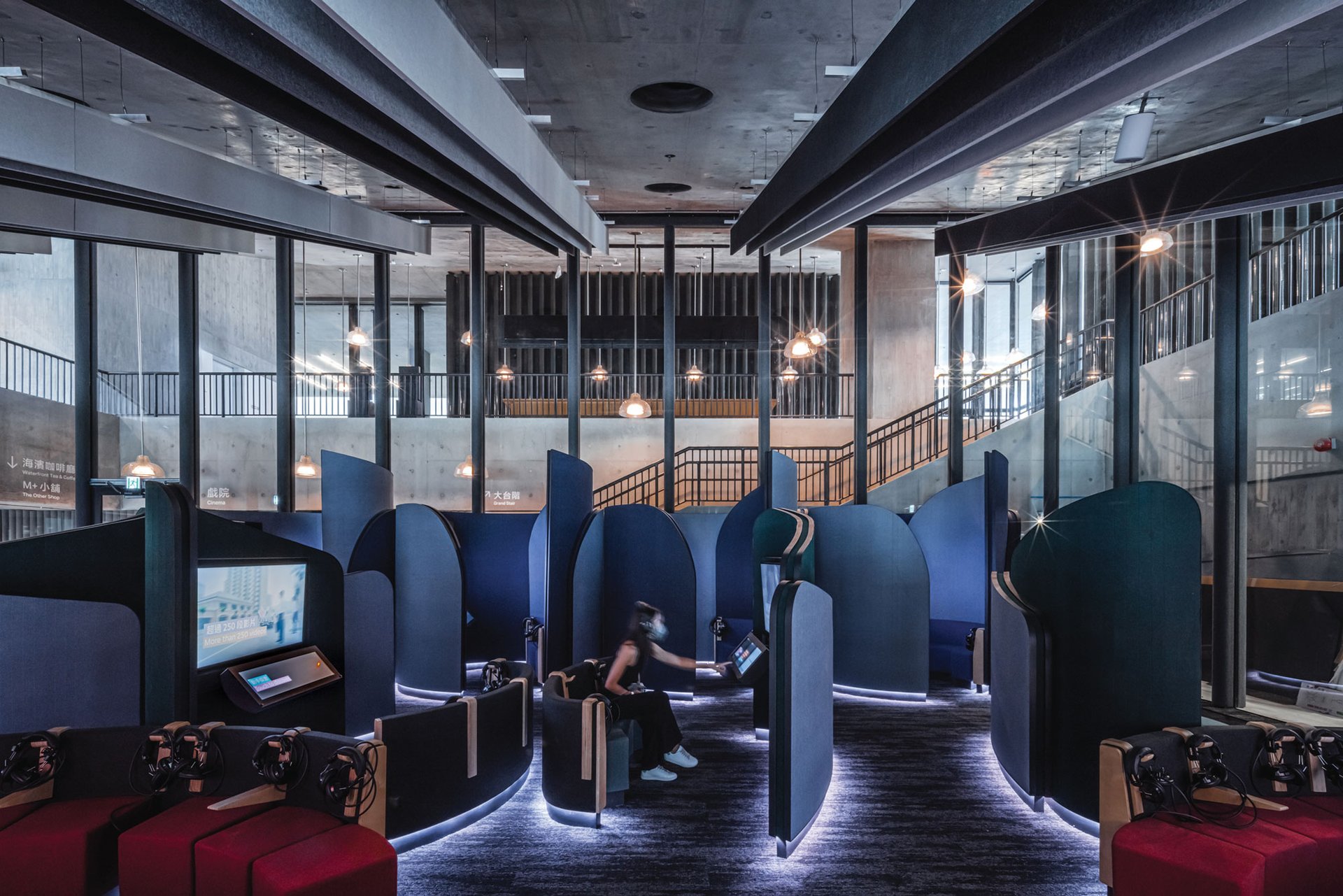
The Mediatheque at M+ Photo: © Kevin Mak; courtesy of M+, Hong Kong
In March, the museum’s Australian director Suhanya Raffel said at a media preview that M+ would have “no problem” showing art by the Chinese dissident artist Ai Weiwei or with political themes—triggering a wave of criticism from pro-Beijing politicians and newspapers as well as liberal fears about censorship or self-censorship.
Yesterday, at the museum’s full opening to press, Henry Tang, the chairman of the board of the West Kowloon Cultural District Authority and the former chief secretary of Hong Kong from 2007-11, gave a speech in which he both rejoiced with Hong Kong for having a world-class museum and said that no museum can break laws, including the national security law, when repeatedly asked about the possibility of censorship inside the walls of M+. “Artistic expression is not above the law,” he said, adding that societies have standards that evolve, whether moral or legal, that may make some works of art less acceptable than they were when first produced.
All this puts M+ in a bind: it is a world-class institution, whose presence in Hong Kong changes much more than just the local artistic landscape, but which must nevertheless toe the rather unclear red lines that may yet undermine it. In scale and ambition, M+ possesses all the qualities needed to take its place with other major art museums around the world, while contributing different points of departure by asserting and amplifying Asian voices and concerns.
Appointed executive director of M+ in 2016, Raffel, whose contract has just been renewed, stressed in an interview with The Art Newspaper that its opening represents a “historic moment”, not only for the region but globally, and that it will offer audiences art and perspectives “which you are not able to see anywhere else in the world”. Yet she, too, reiterates that all present and future endeavours of the museum will have to abide by “every law”.

An exterior view of the museum, designed by the Swiss architects Herzog & de Meuron Photo: © Kevin Mak; courtesy of Herzog & de Meuron
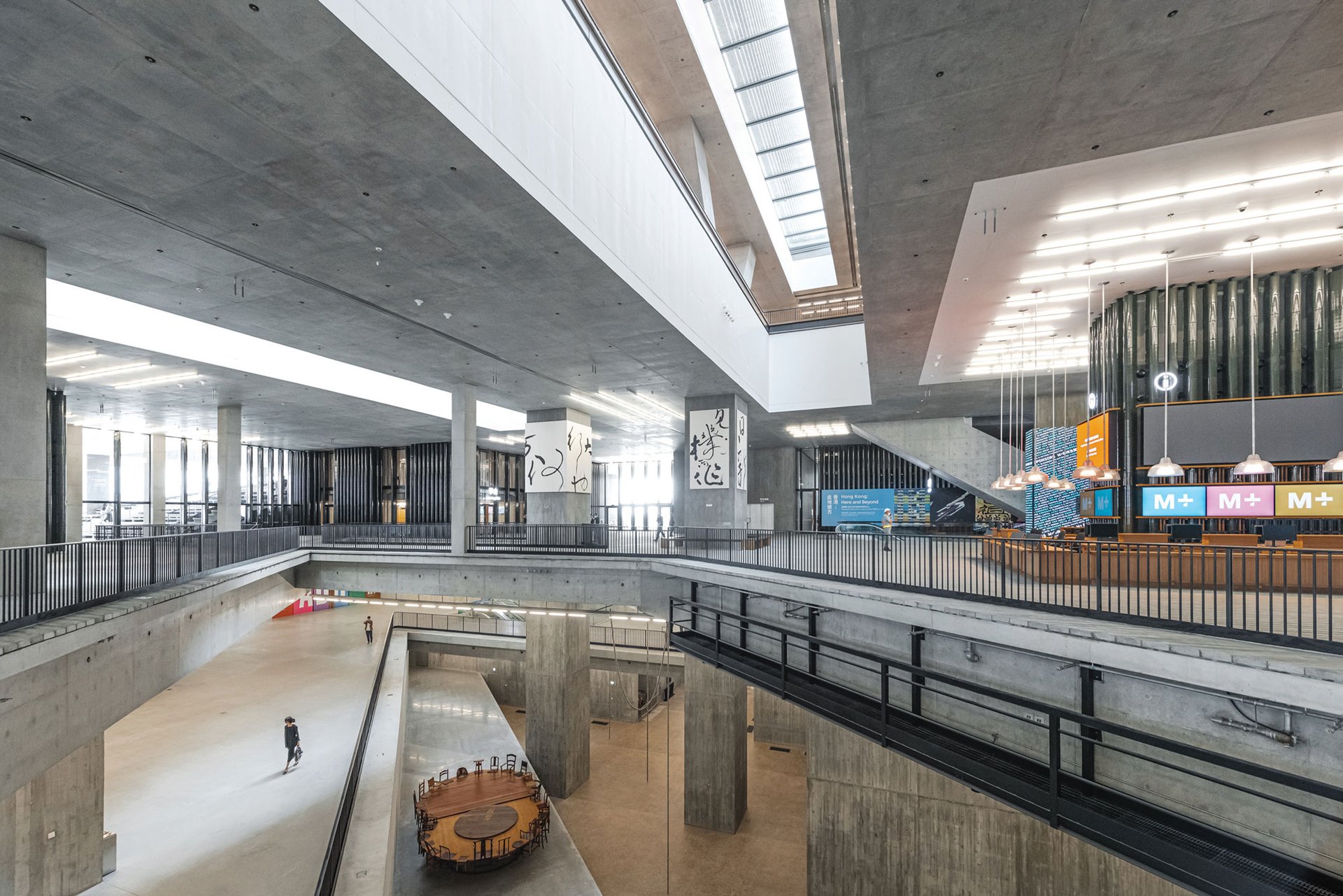
The Main Hall, M+, Hong Kong Photo: © Kevin Mak; courtesy of Herzog & de Meuron
Spotlight on Hong Kong's visual culture
The uniqueness of M+ is evident at every step. With an undisclosed price tag, which is expected to exceed the initial budget of HK$5.9bn ($757m), the museum is striking and innovative in its architecture while harmonising with its surroundings. The building designed by the Swiss architects Herzog & de Meuron takes the form of an inverted T. The tower has a dark green glazed ceramic façade on one side and a giant LED media screen on the other to display specially commissioned moving image works and content related to the museum. The 33 galleries span 17,000 sq. m of exhibition space, mostly arranged along the first and second floors. The large windows, partially obscured by a beautiful motif of bamboo-like ceramic tiles, make full use of natural light.
The inaugural displays reveal around 20% of the collection of 8,000 works. In the main hall, Hong Kong: Here and Beyond (until 27 November 2022) shines a spotlight on Hong Kong’s visual culture from the 1960s until the present. A subtle yet powerful remark in its initial caption explains: “There is more than one story to Hong Kong.” Together with a section on design and architecture in the East Galleries, Things, Spaces, Interactions (until 21 May 2023), it offers a fascinating look at a more vernacular visual language (from the self-taught calligraphy of Tsang Tsou-choi, the “King of Kowloon”, to the abstract patterns created by urban landscapes photographed by Michael Wolf) as well as a detailed overview of some of the most important aspects of Hong Kong’s architecture and popular culture. The design gallery expands into other areas in Asia, featuring iconic objects like the first electric rice cookers from Taiwan and the first Walkman from Japan, and even a 1988 sushi bar by the interior designer Kuramata Shiro, acquired by M+ in 2014 and rebuilt in its entirety on the premises.
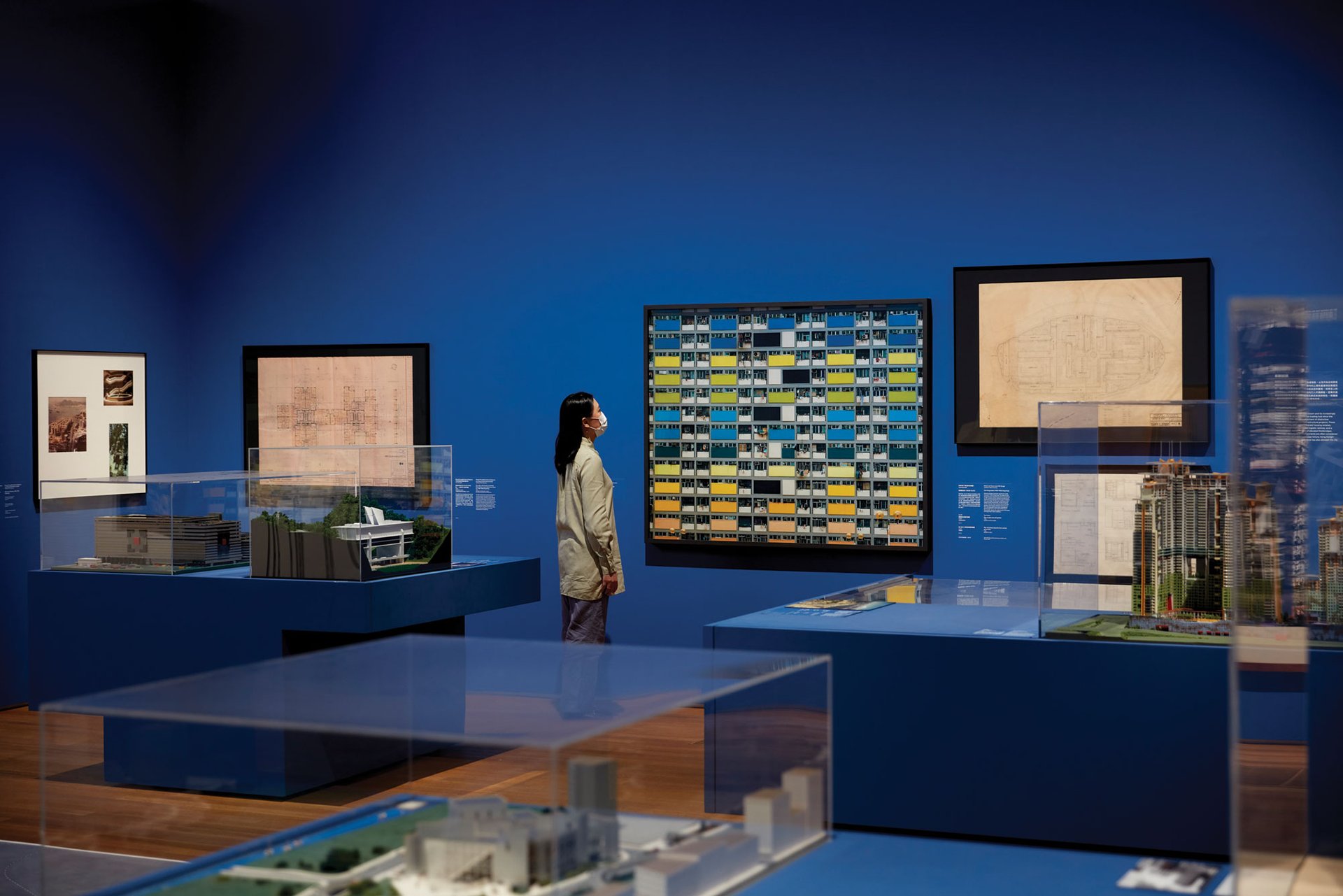
Installation view of Hong Kong: Here and Beyond in the Main Hall Gallery Photo: Lok Cheng, M+; courtesy of M+, Hong Kong
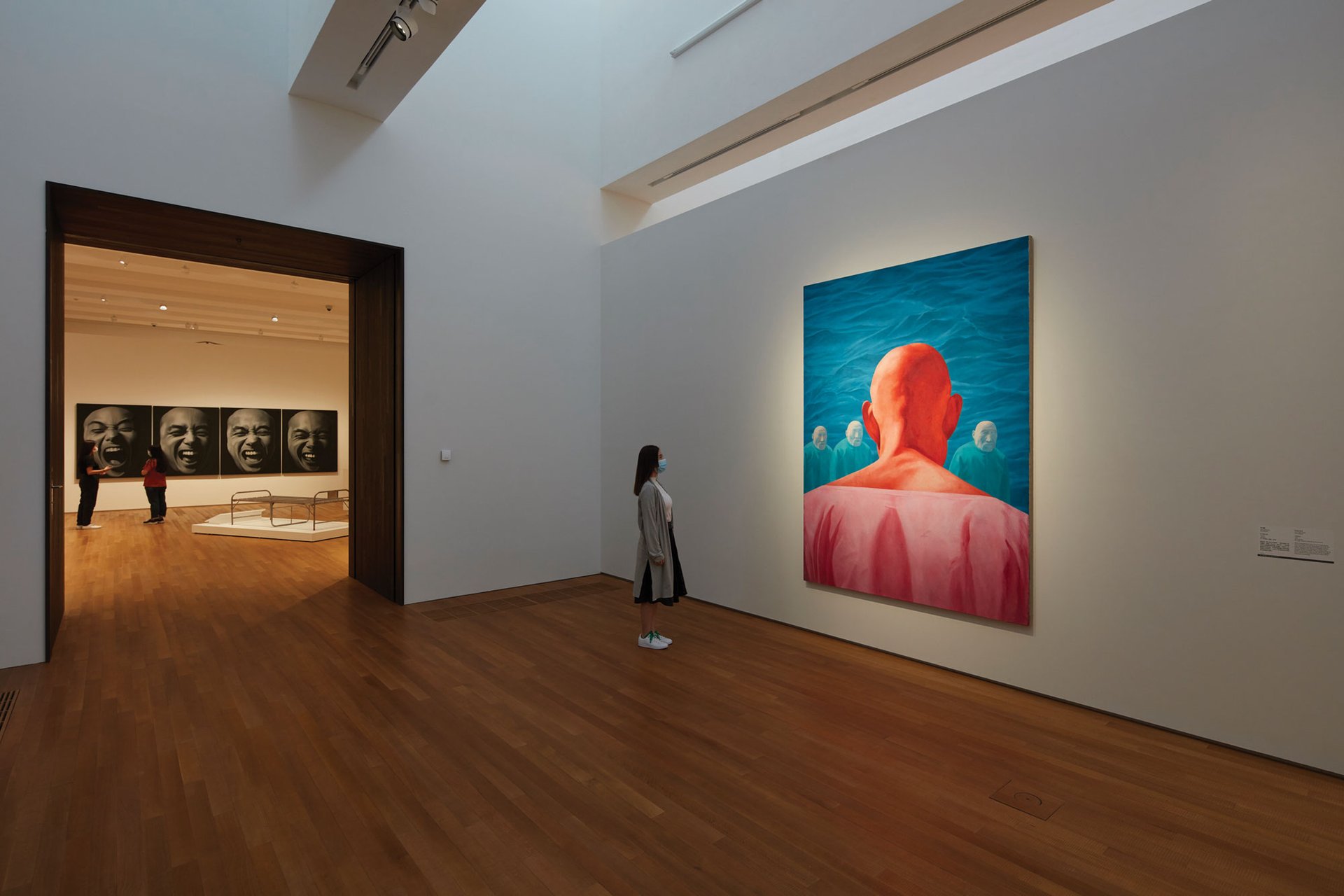
Installation view of M+ Sigg Collection: From Revolution to Globalisation in the Sigg Galleries Photo: Lok Cheng, M+; courtesy of M+, Hong Kong
The galleries do not eschew more politically charged themes: among the Hong Kong artists represented is Kacey Wong, now living in exile in Taiwan after the enactment of the National Security law, whose floating house installation Paddling Home (2009) underlines the quest for home, space and identity. Works by Tiffany Chung remind the audience of the dark days spent by Vietnamese refugees in Hong Kong camps, while a dreamy video installation by May Fung, She Said Why Me, also shows historic footage of protesters being tackled by police—in the 1980s. No more recent protests, or the vernacular codes they have engendered, are on show, but what is there is sure to resonate with the mood of nostalgia in contemporary Hong Kong culture. In the current climate, this celebration of Hong Kong culture and of its place in the larger Asian context is deeply validating of its importance.
Fears of censorship at M+ have crystallised around its landmark collection of Chinese contemporary art, with more than 1,400 works donated in 2012 by Uli Sigg, who served as Switzerland’s ambassador to China in the 1990s (the museum purchased a further 47 pieces). The current selection in the museum’s dedicated Sigg galleries (M+ Sigg Collection: From Revolution to Globalisation, until 7 October 2022), overseen by curator Pi Li, does a commendable job of documenting the Chinese art scene’s development without shying away from loaded political subjects. Works are included by some well-known names, like Zhang Xiaogang and Fang Lijun, and Ai Weiwei is represented by two pieces: Whitewashing (1995-2000), an installation of Chinese Neolithic ceramic urns that have been partially splashed with white paint, and a video, Chang’an Avenue (2004) of one of the main thoroughfares in Beijing. The artistic evolution since China’s 1978 economic opening is illustrated by works that dialogue with the political campaigns of the Mao years and the commercialisation that followed. Then there are the wounded penguins being transported by anguished citizens in the painting New Beijing (2001) by Wang Xinwei, an absurd elaboration of a photograph taken during the 1989 Tiananmen crackdown in Beijing, and Zhang Peili’s eerie video Water (1991), in which the same newscaster who announced the military occupation of Tiananmen Square is made to read entries on water from a dictionary. Their very inclusion is a strong curatorial statement, but the bare-minimum captions mean that viewers will need prior knowledge to recognise these potent political references for themselves.
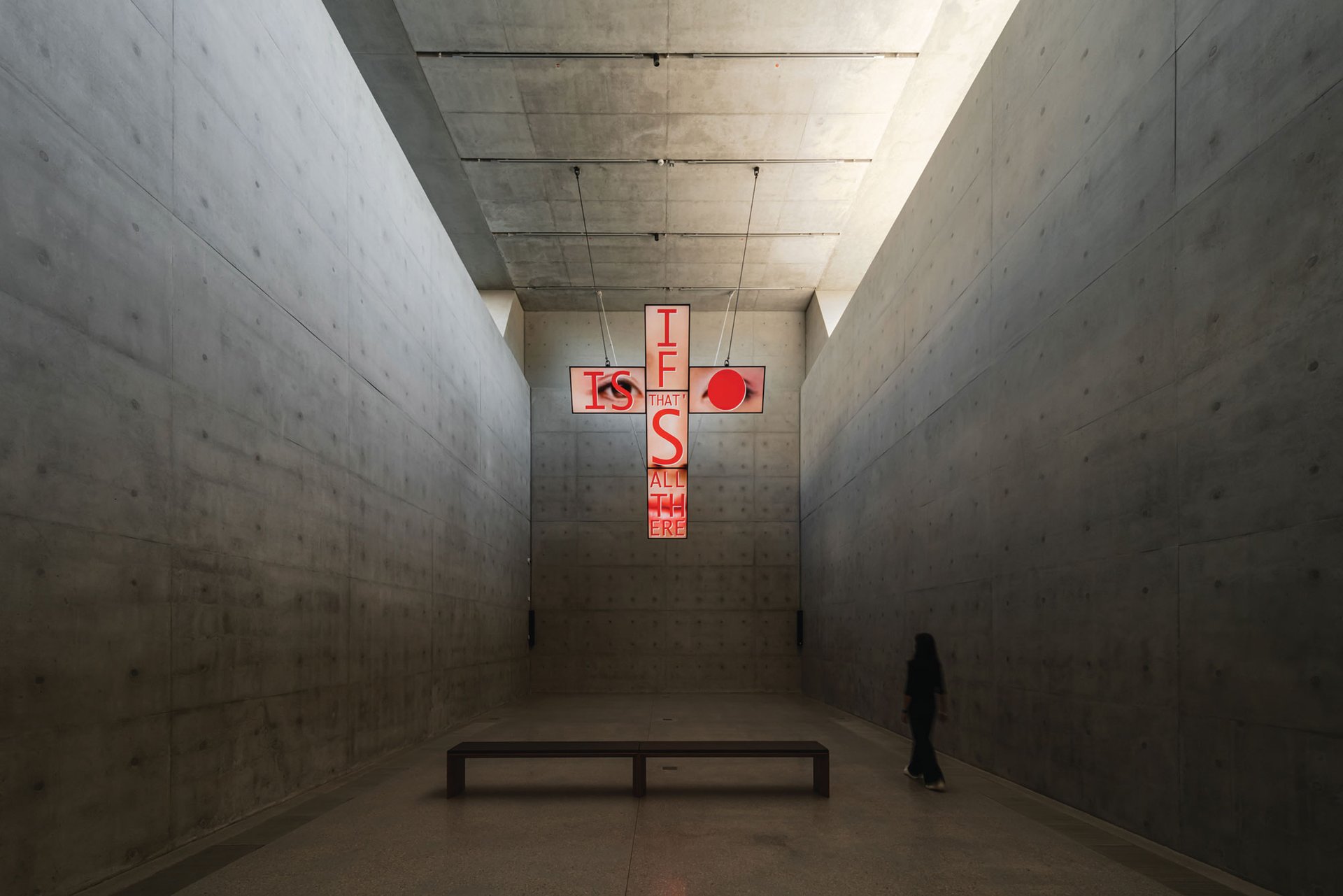
Installation view of CRUCIFIED TVS — NOT A PRAYER IN HEAVEN (TRADITIONAL CHINESE/ CANTONESE/ENGLISH VERSION) by Young-Hae Chang Heavy Industries Photo: © Kevin Mak; courtesy of Herzog & de Meuron

Installation view of Antony Gormley: Asian Field in West Gallery Photo: © Kevin Mak; courtesy of Herzog & de Meuron
For sheer visual impact, further highlights are a spectacular installation by Antony Gormley in the West Gallery, Asian Field (2003), comprising 200,000 clay figurines made by 300 residents of a village now incorporated into Guangzhou city, and a church-like concrete room with Crucified TVs—Not a Prayer in Heaven (2021) by Young-Hae Chang Heavy Industries. Exhibits like these serve to position the museum in a larger international context.
In M+, Hong Kong has gained a truly magnificent museum, whose existence manages to remind the more inward-looking members of the political establishment that Hong Kong is, and has always been, a place of encounters and multiple cultural influences. Its prestige might help it to navigate these troubled times—in the hope that greater openness will not be seen as a threat, whether in Hong Kong or in China.


